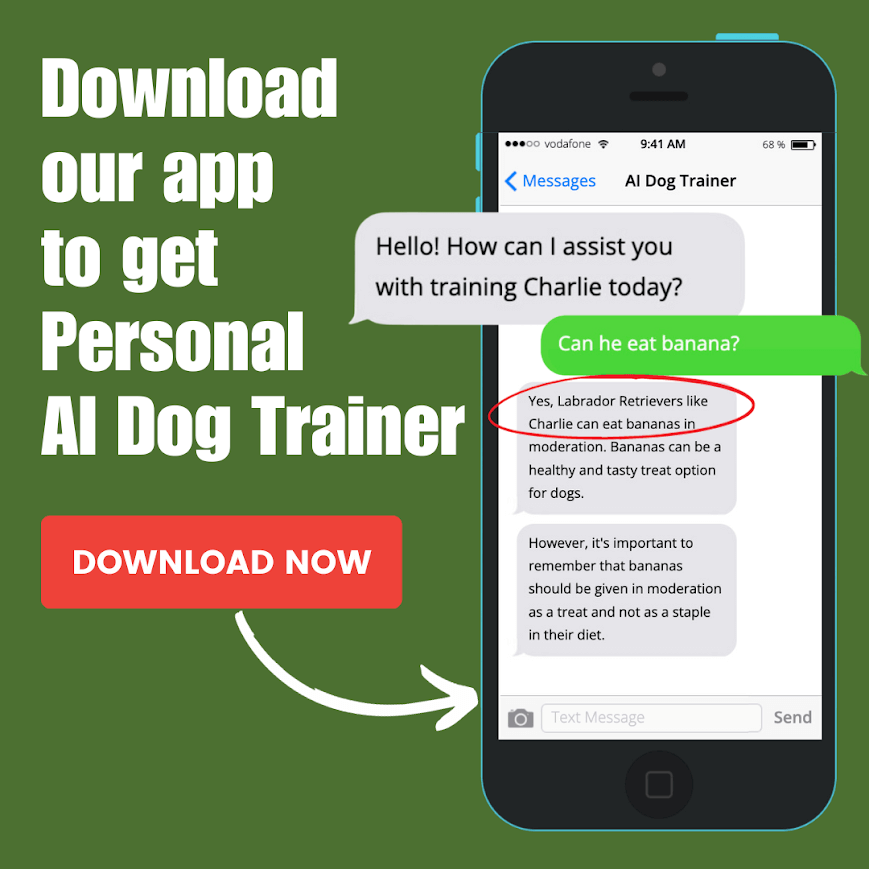Housetraining your dog can be a daunting task, but it’s an essential part of responsible pet ownership. A well-trained dog not only makes your life easier but also ensures a happy and healthy life for your furry friend. In this comprehensive guide, we will cover everything you need to know about housetraining potty training your dog, from establishing a successful routine to addressing common housetraining challenges.
Table of Contents
Key Takeaways
- Establish a routine for successful housetraining, including consistent feeding and potty breaks.
- Incorporate crate training to provide security and ease of travel.
- Use positive reinforcement techniques to encourage desired behaviors & seek professional help if needed.
Establishing a Routine for Successful Housetraining
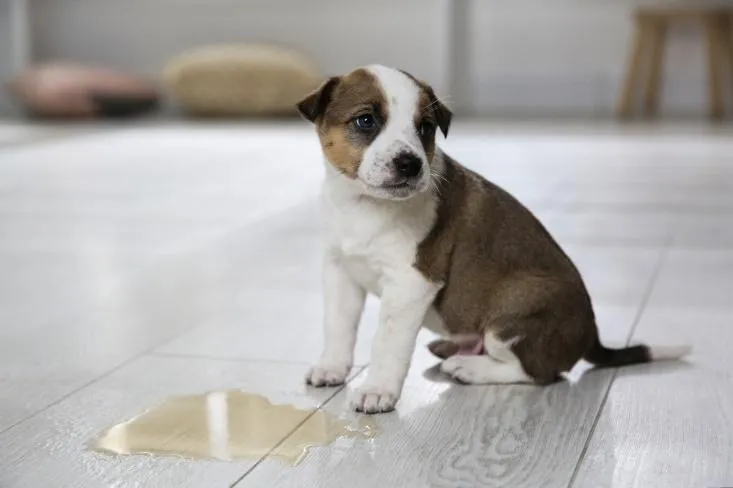
Creating a consistent routine lays the groundwork for successful housetraining. Predictability is comforting to dogs, and a well-established routine streamlines the housetraining process by fostering good habits and minimizing confusion. This section will delve into three vital components of a successful housetraining routine: feeding schedules, potty breaks, and playtime and exercise.
Consistent Feeding Schedule
A consistent feeding schedule is crucial for housetraining success as it helps regulate your dog’s elimination habits. For puppies, it is recommended to feed them three to four meals a day during the housetraining process. Adult dogs should be provided with two meals daily. By feeding your dog at the same time each day, you can predict when they will need to eliminate, making it easier to prevent accidents.
Selecting the right food for your puppy is also important. Choose a high-quality food that is compatible with your puppy. Potty pads can be used as a temporary solution during the housetraining process, but it’s crucial to begin taking your puppy outdoors to eliminate from a young age.
Frequent Potty Breaks
Frequent potty breaks are essential for successful housetraining, especially for young puppies who have not yet developed adequate bladder control. New puppies need to be part of a regular housetraining routine. They should be taken outside every one to two hours, particularly those under 12 weeks of age. Using a leash during potty breaks can help your puppy get used to being on a leash, as well as providing an opportunity to reward good behavior.
Crate training your puppy can also assist them in understanding where they should eliminate. Regular trips outside will expedite the housetraining process, leading to a fully house-trained dog. Incorporating puppy training techniques, such as crate training, will ensure a well-behaved pet.
Playtime and Exercise
Incorporating playtime and exercise into your dog’s daily routine not only promotes overall health and well-being but also aids in housetraining. Regular physical activity stimulates the digestive system and fosters regular elimination. Playtime and exercise can also tire out your dog, reducing the chance of indoor accidents.
For successful housetraining, it’s recommended that dogs be provided with:
Playtime and exercise at intervals of one to two hours, particularly for puppies younger than 12 weeks
A consistent feeding schedule
Frequent potty breaks
By combining these strategies, you’ll be well on your way to successful house train efforts.
Crate Training: An Essential Tool for Potty Training
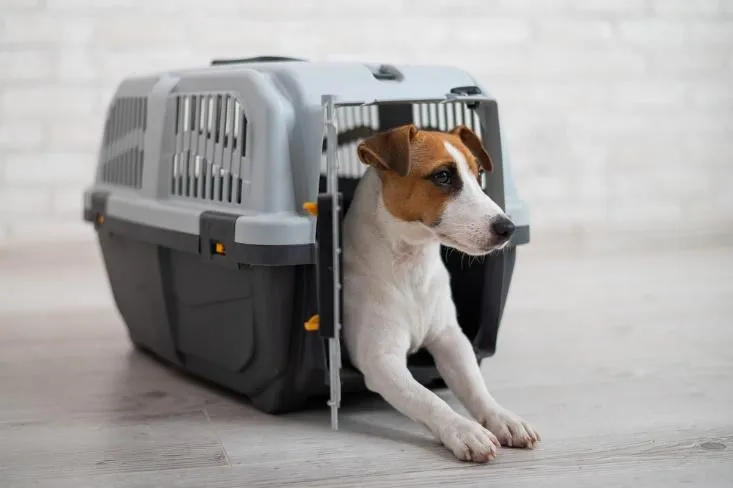
Crate training is an essential tool for successful housetraining. By teaching dogs to keep their living space clean and providing a secure den, crate training can make the housetraining process more efficient and effective. In this section, we will discuss the benefits of crate training, how to select the right crate size, and crate training dos and don’ts.
Benefits of Crate Training
Crate training offers numerous benefits to both dogs and their owners. For dogs, a crate provides:
- A sense of security and a personal space, helping to reduce anxiety and promote independence and self-assurance
- Successful housetraining by teaching dogs to control their bladder and bowel movements, as most dogs will not defecate or urinate in the area where they sleep and eat
- A secure and confined area when they cannot be monitored, helping to prevent accidents in the house
For dog owners, crate training offers peace of mind in emergency scenarios and can make traveling with your dog easier and less stressful. By utilizing crate training, you can ensure that your dog is safe and comfortable in various situations, from daily life to unexpected emergencies. Learning how to crate train your dog is an essential skill for responsible pet ownership.
Selecting the Right Crate Size
Selecting the appropriate crate size is pivotal to successful crate training and ensuring your dog’s comfort. The crate needs to be of sufficient size to accommodate your dog adequately. They should be able to lie down, stand up and turn freely within the space. To determine the appropriate crate size, measure the length of your dog from the base of their tail to the tip of their nose, and add four inches to this measurement for the ideal crate length. Then, measure the height of your dog from the floor to the top of their head or ears, and add two to four inches to this measurement to find the ideal crate height.
As your puppy grows, you may need to adjust the size of the crate to accommodate their adult size. Ensuring that your dog has enough room to move comfortably in their crate is essential for successful crate training and overall well-being.
Crate Training Dos and Don’ts
There are several recommended practices and precautions to bear in mind when initiating crate training. Here are some tips to follow:
- Introduce the crate gradually to your dog, allowing them to explore it at their own pace.
- Use positive reinforcement to create a positive association with the crate, such as giving treats or praise when your dog enters the crate voluntarily.
- Never use the crate as a form of punishment, as this can create fear and confusion, hindering the training process and damaging your relationship with your dog.
It’s important to crate your dog during potty training during naptime, bedtime, and any time direct supervision is not possible. By following these crate training best practices, you will set your dog up for housetraining success and create a strong bond between you and your pet.
Recognizing Your Dog’s Signals and Needs
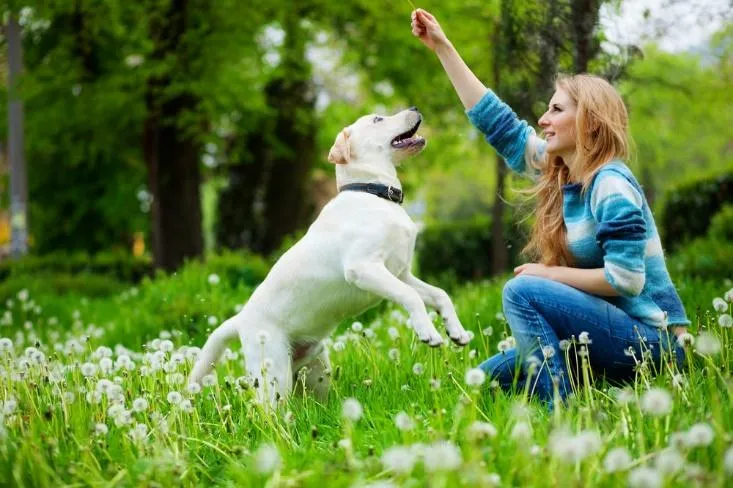
A key aspect of successful housetraining is learning to recognize and respond to your dog’s signals and needs. By understanding the signs that your dog needs to eliminate, you can prevent accidents and reinforce proper elimination habits. In this section, we’ll cover common signs of needing to eliminate, how to respond to your dog’s signals, and strategies for preventing accidents.
Common Signs of Needing to Eliminate
Dogs typically display a variety of signs when they need to eliminate. Common signals include:
- Sniffing with their dog’s nose
- Circling
- Whining
- Sitting by the door
- When a puppy eliminates
It’s important to pay close attention to your dog’s behavior and body language, as individual dogs may have unique signals and rhythms for needing to eliminate.
Older dogs may display different signs than younger dogs when they need to eliminate. Regardless of age, familiarizing yourself with your dog’s specific signals will help you anticipate their needs and prevent accidents.
Responding to Your Dog’s Signals
When your dog displays signals that they need to eliminate, it’s important to respond promptly by taking them outside to their designated elimination area. If your dog eliminates outdoors, reward them immediately with praise, treats, or play to create a positive association with proper elimination.
If you catch your dog beginning to eliminate indoors, pick them up and quickly take them outside. If they complete the elimination outdoors, offer praise and attention to reinforce the desired behavior. By consistently responding to your dog’s signals and rewarding good behavior, you’ll be well on your way to successful housetraining.
Preventing Accidents
Preventing accidents during the housetraining process involves a combination of close supervision, the use of baby gates or tethering, and being proactive in taking your dog outside for potty breaks. By monitoring your dog’s behavior and anticipating when they may need to go outside, you can help them develop good elimination habits and avoid accidents in the house.
In the event of an accident, clean up the mess calmly and thoroughly, using an enzymatic cleaner to remove odors and prevent future accidents in the same spot. By addressing accidents properly and remaining consistent in your housetraining routine, you’ll help your dog become fully house-trained in no time.
Positive Reinforcement: The Key to Successful Potty Training
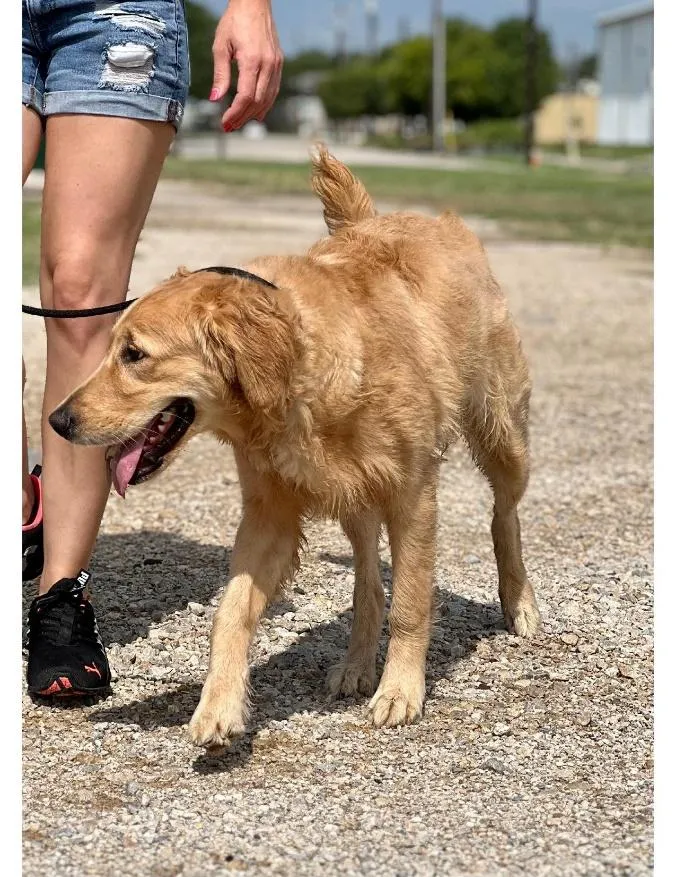
Positive reinforcement is crucial for successful puppy potty training, as it encourages good behavior and strengthens the bond between you and your dog. By rewarding your dog for proper elimination and avoiding punishment, you can create an environment in which your dog feels safe and confident, leading to successful housetraining.
In this section, we will discuss the benefits of positive reinforcement, how to reward good behavior, and the importance of avoiding punishment during potty training.
Benefits of Positive Reinforcement
Positive reinforcement helps dogs learn desired behaviors more quickly and effectively than punishment, while also strengthening the bond between owner and pet. By providing rewards such as treats, praise, and toys for desired behaviors, positive reinforcement encourages your dog to repeat those behaviors in the future. This method of training also promotes a healthy, happy relationship between you and your dog, making it an ideal approach for house training.
In addition to its effectiveness in training, positive reinforcement can also help reduce anxiety and stress in dogs, leading to an overall improvement in their well-being. By focusing on rewarding good behavior and avoiding punishment, you can help your dog become a well-adjusted, confident member of your family.
Rewarding Good Behavior
To reinforce proper elimination habits, it’s essential to reward your dog immediately after they eliminate outside. Rewards can take various forms, such as treats, praise, or playtime. The key is to create a positive association with proper elimination, so your dog is more likely to repeat the behavior in the future.
Offering a small treat or verbal praise, such as “good dog” or “yes,” can help reinforce the desired behavior. Be consistent in your rewards and remember that timing is crucial, as rewarding your dog too late can lead to confusion and hinder the housetraining process.
Avoiding Punishment
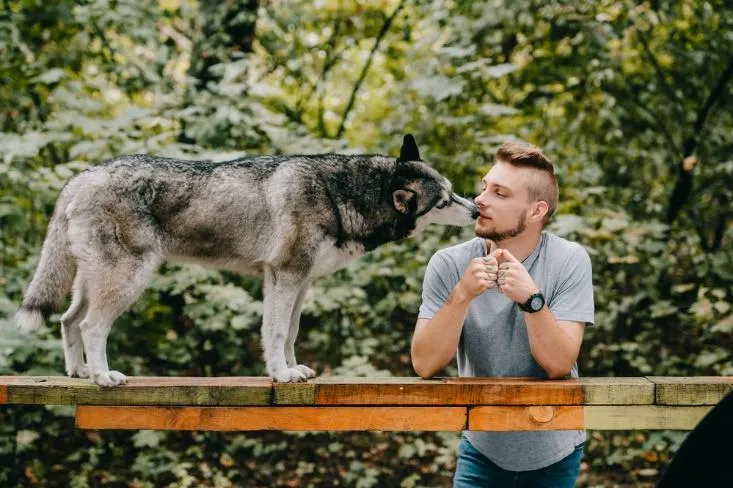
Punishment during potty training can create fear and confusion in your dog, hindering the training process and damaging your relationship with your pet. Instead of punishing your dog for accidents or undesirable behavior, focus on using positive reinforcement to encourage good habits and strengthen the bond between you and your dog, ultimately leading to a potty-trained pet.
If an accident occurs, clean up the mess calmly and thoroughly without punishing your dog. Remember that patience and consistency are key to successful housetraining. By avoiding punishment and focusing on rewarding good behavior, you’ll set your dog up for a lifetime of success.
Troubleshooting Common Housetraining Challenges
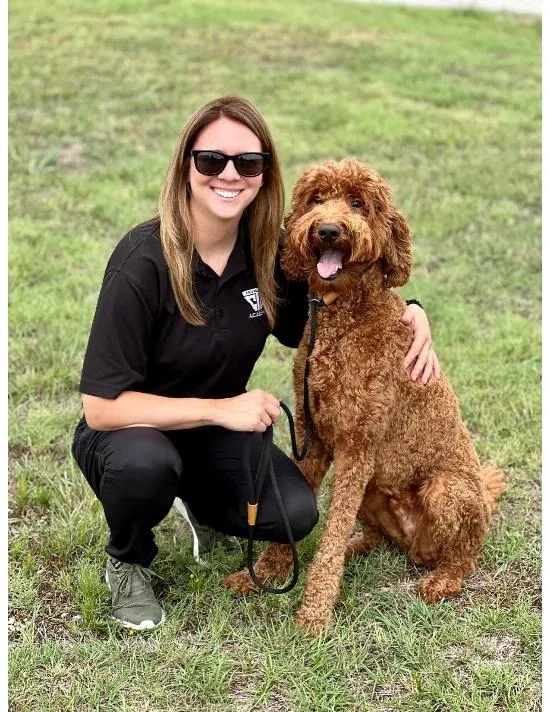
House training is not without its challenges and obstacles are to be expected. This section will provide guidance on how to navigate common hurdles in the house-training process, including managing accidents, addressing medical concerns, and resolving behavioral issues.
Dealing with Accidents
When accidents happen, it’s important to remain calm and clean up the mess thoroughly. Use an enzymatic cleaner to remove odors and prevent future accidents in the same spot. Remember that accidents are a normal part of the housetraining process, and punishing your dog for them can do more harm than good.
By addressing accidents properly and remaining consistent in your housetraining routine, you’ll help your dog become fully house-trained. If accidents persist despite your efforts, it may be helpful to consult a veterinarian or professional trainer for guidance.
Addressing Medical Issues
If your dog is experiencing frequent accidents or other signs of medical issues, such as changes in appetite or elimination habits, it’s essential to consult your veterinarian. Various medical conditions, such as urinary tract infections or parasite infections, can cause house soiling.
By addressing any underlying medical issues, you can help your dog overcome housetraining challenges and lead a healthier, happier life.
Overcoming Behavioral Problems
Behavioral problems, such as marking or separation anxiety, can also contribute to housetraining challenges. To overcome these issues, use consistent housetraining techniques and seek professional help if needed.
Addressing behavioral problems promptly and effectively can help your dog become fully house-trained and ensure a positive, rewarding relationship between you and your pet.
Summary
In conclusion, successful house training is essential for both dog and owner, contributing to a happy, healthy, and harmonious home. By establishing a consistent routine, using crate training and positive reinforcement, and addressing common housetraining challenges, you can help your dog develop good elimination habits and become a well-adjusted member of your family. Remember that patience, consistency, and a positive approach are key to successful housetraining.
Frequently Asked Questions
How do you potty train a housebroken dog?
Take your housebroken dog to the same potty spot outside on a leash, and reward him with verbal praise, treats, or a favorite toy after he eliminates. Establish a consistent routine, taking him out at the same times each day, and praise lavishly every time he goes outdoors.
Does house trained mean potty trained?
Yes, house trained does mean potty trained. House training involves teaching a dog to wait to eliminate until you let them outside and to understand where and when it’s appropriate to go to the bathroom. It takes patience and determination to train a pup or even an adult dog this way.
What is the hardest dog to potty train?
Due to their stubborn nature, Pekingese, Pomeranian, Pug, Irish Wolfhound, Afghan Hound, Shi Tzu, Yorkshire Terrier and Sealyham Terrier are some of the hardest dog breeds to potty train.
What age is too late to potty train a dog?
It’s never too late to potty train a dog, though it may take longer depending on the age of the dog and their past experiences. Puppy house training typically takes 4-6 months, but smaller breeds may need more frequent trips outside, and adult dogs may require more time, patience and determination to create boundaries and new habits.
How do you stop a dog from peeing and pooping in the house?
Take your dog outside frequently, especially after they wake up and after playing, eating, or drinking, on a leash to the same spot every time. Interrupt accidents in the house with a loud “Ah ah!” and immediately take them outside. Use vinegar to deter them from returning to the spot, and give them treats and praise when they go to the right spot outside.
Corey is the founder of DogNeedsBest, and her motive behind this website is to provide a platform where pet parents can get free access resources that would them in petting dogs in a better way. She spends her free time taking care of pets at shelter homes of abandoned animals. Corey also donates a certain portion of her wealth to pet shelter homes in Miami, Naples, and Tampa.


